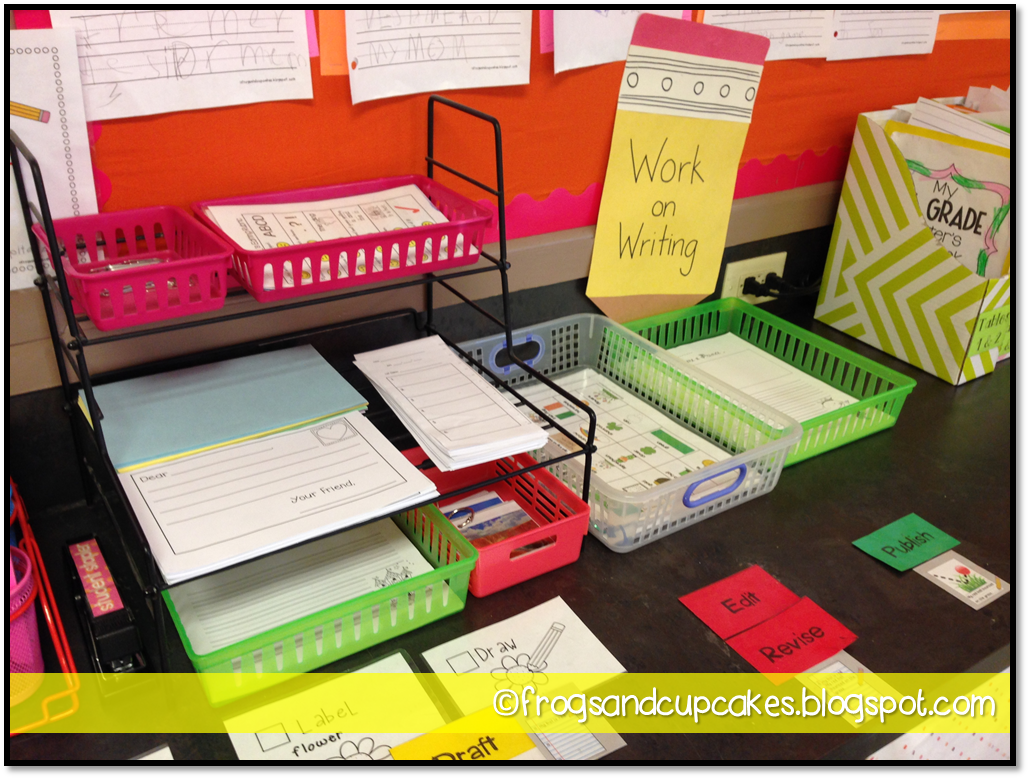Plants unit, week 2 ended yesterday! We have had some GREAT fun so far and have learned so much about plants! The kids have just been so excited about it all--makes a teacher feel pretty good!! ;)
In this unit, we are covering not only plants and their parts, but also some ELA objectives, such as main idea, making inferences, compound words, expository text, parts of speech, research, letter writing, revising and editing, and media and its purpose/techniques.
*********************************************
LAST WEEK2 weeks ago, I introduced our new unit (we had just finished penguins) to my students by doing this:
Before the unit introduction, I checked out some plant books from our school library and displayed them on one of the counters in our classroom. I also put the plants book box from our classroom library on the counter next to the library books. Here are just a few selections of the many great plant books that we will be using during our unit!

The kids noticed the books early in the day.
I also picked some pieces off of the bushes outside my classroom door and put them in a tote bag to use for our lesson. We passed the tote bag around and felt inside the bag without looking.
The students quickly started making inferences about what we would be learning about next! The plant books around the room (which they know I do for every unit) and the familiar feel of the items in the tote bag led them to believe that we would be studying plants--and they were right!! :)
We made a schema chart that we add to/adjust daily.
We will also keep track of new words that will eventually move to our vocabulary wall.

We did the flipchart together across 2 days and then spent the rest of the week reading/studying short fiction and nonfiction passages about various plants for main idea. Again, we are getting better and better at it.
We also briefly discussed living and nonliving. I used this fabulous PBS video to kickstart a discussion about what those words mean.
We then did this super-fun activity that I posted about on Instagram a few days ago!
We made little cards that said "living" and "nonliving", went outside, placed the cards on living and nonliving things, and took pictures using an iPad. This was great fun! The kids then shared their photos with a partner and the whole group.
I wanted to print some of these pictures so we could add it to our living and nonliving anchor chart, but we (currently) do NOT have an easy way to print photos on the school iPads. We also had to turn them in right after this activity. Oh well.
THIS WEEK
This week's plant fun was motly about main idea (still) and the parts of a plant. We read this WONDERFUL Eric Carle book to jumpstart a discussion about parts of a plant (seeds):
This book is also for teaching about the life cycle of plants.
We drew what we already knew about plant parts...
...and then studied the parts of a real plant! The kids really picked them apart--they wanted to see and know everything about them.
We concluded the lab with drawing another diagram of the parts of a plant, in case they learned anything new.
The next lesson was about comparing the parts of different plants. Does every plant have a stem? Does every plant have roots? Does every plant grow the same way? This is a great book to start with:
We headed back outside to compare the parts of flowers to other kinds of plants, like grass, trees, and bushes.
Friday's activity about parts of a plant that we eat was fantabulous--we had a Plant Tasting Party!!
We sorted several types of plants by what part of the plant they are and then got to eat them! They did an AMAZING job at this and were obviously elated to get to eat and learn at the same time! :D
We concluded thew party by watching this book on TumbleBooks and discussing why the bear kept feeling cheated. We will read it again next week.
Finally, we planted some grass seeds and are hoping that they turn out as great as these ones did last year!
NEXT UP
Next week we will start a big plants research project that will include some wormy fun! I made a little journal for us that I will share after I get it just how I want it...
Soooo, what fun things are you up to in your classroom?







.jpg)



































